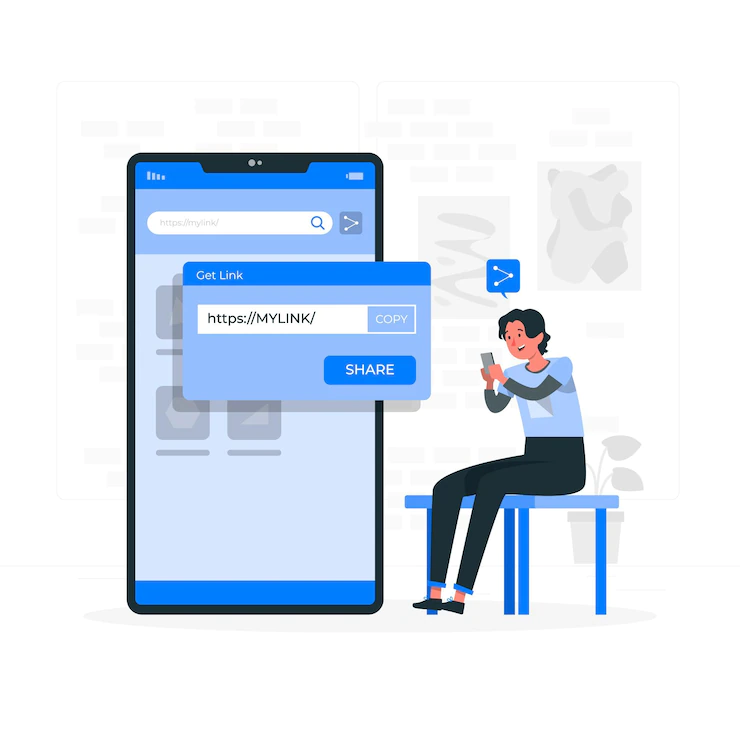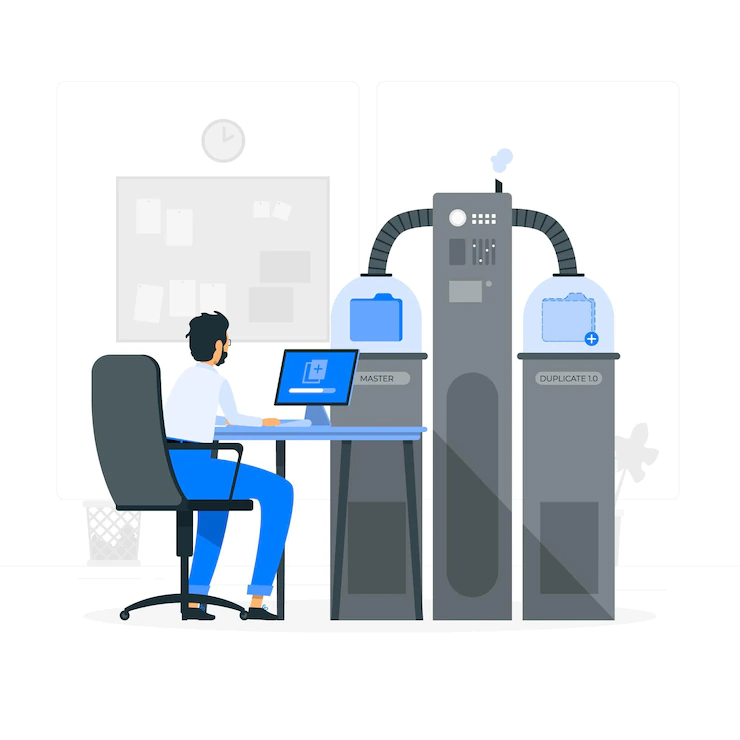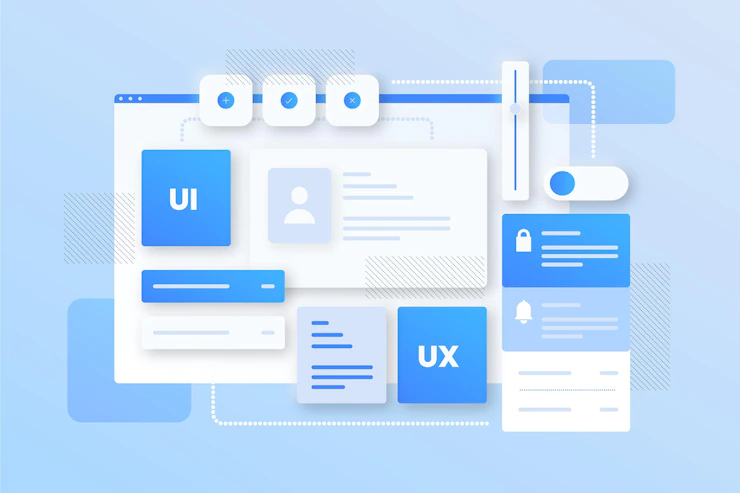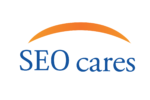Your results are less than desired even though you created a website and invested time and money into making it flawless.
Another possibility is that you run a website but your statistics aren’t quite what you’d like them to be. You’ve reached the correct spot.
Let’s take a 30 Days plan to increase your SEO traffic to the maximum.
Is it possible to increase your SEO traffic in 30 days?
It is possible to significantly improve your search traffic in just 30 days without spending any cost, whether you’re new to the industry or want to optimize existing content.
And now we are going to provide you with a plan to increase your SEO traffic in 30 days.
Day 1: Optimise your title and Description:
The snippet on the Google Search results page is the first thing a person sees after performing a keyword search.
Your page URL, title, and meta description are all included in the sample. It is important to keep the title short and clear.
Your keyword ranking is affected by it. The information that your page gives should be appropriately described in your meta description.
Your click-through rate will be affected even if it has no direct effect on your search ranking!
Day 2: Always Use ALT Attributes to Optimize Images
Without textual help, search engines are unable to completely understand the content of images.
Because it enables search engines to recognize the content of your photos, using Alt text to explain your images is essential.
Additionally, the Alt attribute (alternative description) shows the designated alternative text if a picture cannot be loaded for some reason.

Day 3: Fixing Broken Links:
A user’s browser displays the error code 404 (file not found) when they attempt to access a URL that isn’t hosted by a server.
Find and fix those broken links. Not only does this result in a bad user experience, but it also prevents search engine crawling.
When there are too many 404 errors on your website, search engines assume that it is not being properly maintained.

Day 4: Review Your Redirects:
Certain URLs may need to be temporarily redirected due to server relocation.
Users can still access the older URLs thanks to these redirects (status code 302), which guarantee that Google keeps the previous URLs in the index even after server relocation.
Practical hint: Check to see whether any current 302 redirects are required or if 301 redirects would be a better choice.
Day 5: Standardize your Url Structures:
Your website’s URLs serve as markers for the content that your visitors desire to access. Users can reach their target more quickly if the website structure is more stable.
Positive user experience design boosts dwell time and lowers bounce rates. A stable URL structure aids in a quicker website crawl for search engines.
Bots can only crawl each website once, thus the more quickly they can reach all URLs, the more pages they can browse through and index.

Day 6: Shorten your URLs:
Up to 2,000 characters, long URLs are easily processed by Google. This means that the ranking of your site page is not directly impacted by the length of your URL.
However, the user experience is impacted by URL length (which eventually still impacts your SEO). Much easier to share on social media, remember, and use for advertising are shorter URLs.

Day 7: Link your pages internally
The most crucial and probably most effective webpage is your home page.
The homepage distributes the link power (also known as link juice) to all other subpages.
Internal links and simple menus should be used to evenly spread the link juice to all other subpages.
You can manage the search engine bot thanks to regular internal linking.

Day 8: Use anchor texts to maximize relevance:
Anchor texts thoroughly explain a link and let the user know what to expect from it. With anchor texts, users can click on words they are familiar with and be sent to a URL that is hidden behind the anchor text rather than having to click on an unattractive URL. Internal links should always have the landing page’s related keyword as their anchor text. Additional websites that link to a subpage using the same keyword will give the search engine more information that the landing page is highly relevant to the keyword.
Day 9: Keep Click Paths SHORT:
Users of websites want to reach their intended page as quickly as feasible. So, make sure your click routes are as brief as possible. The path a user takes to arrive at a certain page is known as the click path. Imagine yourself purchasing online. A user can navigate from the homepage to the shopping cart.
Day 10: Improve your site’s accessibility:
An essential component of SEO is troubleshooting technical issues and guaranteeing that your site is always available.
To tell search engines about every URL on your website, use a sitemap.Xml file.
Search engines may read this sitemap, which includes a list of all significant URLs and website metadata. The structure of the sitemap.xml file is constant: The file specifies both the XML version and the code.
The URLs may be improved with extra metadata, such as the frequency of URLs changed.
Various content management systems can be used to build the sitemap.xml. To create the file, there are also specific sitemap generators accessible.
You should upload the file to the Google Search Console after creating it.
Google then verifies the accuracy of the sitemap-XML.

Day 11: Tell search engines what to crawl:
A text file called robots.txt instructs search engine crawlers which ensure to crawl (permit) as well as which not to crawl (disallow).
Search engines won’t be able to properly index your website if a crucial website or JavaScript components aren’t included in the crawling. The more of your posts that are indexed, the more SEO traffic you’ll get!
The basic version of robots.txt is shown below: Userland Agent: * In this instance, all bots must follow the instructions (*). There are no limitations on crawling. You should save the robots.txt file in the root directory of your site after creating it.
If there is a part of the website that you do not wish to be Use a “disallow” in the file to indicate which parts of the website you do not want to be crawled.
Use the following user agent: Refuse: /this directory
Practical hints: Give search engines instructions with a robots.txt file.

Day 12: Do Your Keyword Research
Finding keywords that connect with a target audience will enable you to increase the visibility of your content.
You should also consider the goal of your website when choosing keywords.
Choose transactional keywords if your website’s primary goal is to make sales or informational keywords if it wants to educate readers.
The following are some of the tools we advise using to find relevant keywords:
- Google Search: Google delivers suggestions as you write based on the most frequent search keywords that your current search matches. This also offers suggestions for long-tailed keywords based on your short-tailed entries.
- Google Trends: You can see how frequently popular search phrases are used with this free tool. The tool also displays a potential peak demand preview. For terms relating to seasons and events, Google Trends works nicely.
- Google Keyword Planner: As soon as you register, you may begin looking for keywords and relevant ideas. Additionally, you can access websites and view appropriate keywords based on content. You may see details about the monthly search volume using the tool as well.
- LongTailPro and SEMRush is the greatest paid tool for keyword research. They offer a variety of tools that will help you understand your keywords. You could try these tools.

Day 13: Ensure Neat Website Navigation:
On a website, a navigation menu facilitates user navigation and aids in finding what they are looking for.
Passing PageRank to all of your website’s revenue-generating pages is also beneficial.
To avoid issues with users using your website, the navigation on your webpage should be organized.
Day 14: Improve your site’s loading speed:
The speed at which a website load is an important ranking criterion. Users want to see your material immediately; they don’t want to wait for a page to load.
High bounce rates on websites are a common cause of low rankings, as are pages with slow load times. The loading time can be optimized in a variety of technical ways. Google PageSpeed may be used to measure how quickly your website loads.
Use small, optimized picture files whenever possible, and avoid using large ones. JScript and CSS files should be optimized. To improve performance, you could save these in external files on the server.

Day 15: Optimizing your website for mobile:
For search rankings, mobile friendliness is a significant ranking criterion. Internet browsing on mobile devices is becoming more and more popular.
Over 70% of visitors view web pages on mobile devices in some places. How does this affect you? Each and every page of your website should be mobile-friendly. Every. One. Single.
You may test your website’s mobile performance with Google’s free mobile friendliness test before you begin with mobile optimization.

Day 16: Identify Duplicate Content:
Duplicate content can affect how different pages of your website rank for the same search. It’s known as cannibalization.
Due to Google’s inability to select the best version, the website cannot be found in the top rankings. Find the origins of duplicate material on your website, and then fix the problems as soon as you can.
Verify whether or not your website is accessible using HTTP, HTTPS, or www.
If there are many versions available, use 301 redirects to direct users to the one they want. Verify whether the same content is indexed in various formats, such as the print edition or a PDF, for example.
Check to see if your website generates lists or docs that contain duplicate content automatically. Check to see if the content on your website is the same with and without the “/” at the ends of the URL.

Day 17: Eliminate duplicate content:
Particularly online stores frequently run the risk of producing duplicate content. A product might be classified under numerous categories, for instance.
A product may be available under different URLs if the URL structure is hierarchical. Canonical tags can be used as the best way to resolve this problem.
This identifies which URL is a clone and which is the “original” URL for Google. Add a canonical tag to each page of your website by going there.
The original web page should be referenced via the canonical tag when there is duplicate material.
If you employed a writer to write the material for your website, make sure you proofread the post before releasing it. Grammarly, Copyscape, and Duplichecker are the plagiarism checker tools you can use.

Day 18: Use TF*IDF to Analyse Content Quality:
A website’s ability to rank highly depends on how original its content is and how much value it adds to users’ experiences.
You can use TF*IDF to determine whether text optimization is required for your website. Using the top 10 search results from the SERPs, it calculates the frequency of phrases related to the specified main keyword.
After that, you may check your text to determine if the essential keywords are included by using the term frequency. Make an effort to effectively incorporate the analysis’s keywords into your content.
Assemble material that is thematically appropriate for your users. Use the TF*IDF tool to frequently analyze your text to stay on top of changes to the SERPs and variations in user interest.
Day 19: Create unique headlines:
Your website’s headlines often serve two purposes. The first is to provide the information with a clear structure, and the second is to attract readers to keep reading.
The HTML source code uses h-tags to identify headlines.
Practical hints: Use one h1 headline maximum per page. In the h1 headline, use the page’s primary keyword. Always use keywords in a natural way and avoid keyword stuffing.
Organize subheadings according to time (H1, H2, H3, etc.) H-tags should not be used to format the font size. Rather, use CSS. Use topically related terms in subheadings whenever available (h2, h3, etc.).
Make headlines as precise as you can by eliminating all superfluous words.
To grab the user’s attention and make your material skimmable, employ components like numbers, bullets, and graphics.

Day 20: Create your content:
A popular method for gathering, reorganizing, and publishing previously published content is content curation. The body of work frequently offers users fresh viewpoints on the previously covered subject matter.
To successfully curate material, you must first hunt for the right sources before using your site to publish the content on purpose.
Content can be simply shared through personal social media accounts as well. Many visitors come from popular topics.
Practical hints: Publish illustrative infographics to help others understand complicated concepts.
Publicize statistics and surveys on subjects that can be of interest to your target audience. You should write e-books that thoroughly and simply explain a topic.

Day 21: Recycle your content:
Webmasters and SEOs can rearrange and refresh content that is currently doing well for their audience by republishing it.
You cannot simply publish the same item and make it appear new when you republish content.
To make the information more suitable for your audience, you should include new facts, statistics, examples, or even new forms.
Updating outdated content is frequently rewarded by search engines.
But keep in mind that you only receive a reward for truly improving the relevance of the information!
Look for your most popular material and make sure it’s updated. Be sure to update your meta components, such as the title and description.
Day 22: Always Keep your content code ratio high:
A search engine can recognize that your webpage doesn’t have much to provide if it has thin content. These website pages consequently have low rankings in the search results.
Poor content (text) to code ratios are the main indicator of sparse content. The overall opinion is that a website’s text content should not be less than 25% of its total content.
Use the text that is necessary on your website. By removing needless comments and formatting, the source code can be made smaller.
Write your text in a way that makes the content easy to read. When possible, format your content with CSS rather than HTML.
Day 23: Diversify new content:
There are numerous methods for generating new content. Web content can also include audio files, movies, graphics, and photos in addition to text.
Try out several content formats, including blog posts, website pages, webinars, videos, etc. Utilize the other options available! Customers value variety.
Practical hint: Infographics can be used to simplify complicated concepts. Provide information in concise, understandable videos.
Post case studies describing your insights and novel approaches. elucidate the numerous facets of your work from a whole different perspective.
Interview experts, CEOs, and staff members on topics that concern your target audience. Publish lists that have never been written before.
Day 24: Internationalise your website:
Is there a multilingual or regional version of your website? Awesome! Remember to tell search engines about this.
The content of your website will then be shown to users in the appropriate nation and language versions by the search engines.
The hreflang-tag should be used to identify the various language and regional versions of multilingual websites.
Make careful to add a separate tag for each language version of the website when you apply this tag in the section.
Practical hint: If a page contains a translation in another language, provide a hreflang-tag on every page.
Include links to all available language versions on each page of your website.

Day 25: Focus on Local Search as well:
More than 80% of customers research local businesses online before going there, according to a Google survey.
This makes local search optimization for your website crucial.
- Since customers frequently use smartphones to search for nearby shops, eateries, or service providers, make sure your website is mobile-optimized. Use the same company name, address, and phone number (NAP) across all of your online properties. For listings in business directories, use the same information.
- Create a Google+ MyBusiness account for your website. Make sure to include photographs of you and your company in addition to the NAP information. Make sure your material is relevant to the area. In H1 titles, headlines, and meta descriptions, mention the city or region.
- Use your service or industry as the primary keyword and carefully add your city or region. Set the city/region + your offer/service combination as the keyword focus (ALT attributes or URL names). Specify the NAP data in the source code using markups. Include a listing for your company in directories like Yelp. Get internet reviews from your customers.

Day 26: Get benefits from social websites:
Social media sites are a significant traffic generator. An increase in the likelihood that your posts will be often shared organically on social media will help you increase your reach. Additionally, you can increase visitors through social media sites. Google keeps track of social interactions, which might aid it in evaluating the value and relevancy of your material.

Day 27: Force user interaction:
User-generated material can improve a website’s relevancy and freshness. You can use a lot ways to engage Users with your website.
The most popular methods include product reviews, comment sections on blogs, and question-and-answer sections! Encourage readers to leave comments on your blog postings.
You can just ask open-ended questions or add a CTA request after the paragraph. Promote your blog content on social media and invite comments from readers.
Allow users to rank and comment on your products in the open-text sections.
Post people’s most asked questions and then post their answers as well.

Day 28: Setup Google Search Console:
For monitoring websites, the Google Search Console is a crucial foundation.
To submit the sitemap, this is essential. XML and to gather crucial information about the most popular search terms used to locate the page on Google.
It will also let you know if there are any technical issues with your website.
A valid Google account must be created before adding your site to the Search Console.
Optimize your metadata and frequently check the Search Console’s HTML improvements.

Day 29: Sign up for Google Analytics:
You can use Google Analytics to examine user behavior specifically on your website.
Very basic to quite complicated functions can be chosen from the analysis options.
You must include the appropriate Google Analytics code snippet on each page of your website to track visitors in Google Analytics.
Every day, look at the most crucial performance data, including page visits, bounce rate, and dwell time.

Day 30: Monitor your progress:
There are many different techniques available for determining the efficacy of your website. Use the free tools available to you as well to track and evaluate website traffic. Standard website monitoring tools like Google Analytics and the Google Search Console are available for free. You are now well on your way to mastering SEO! But keep in mind that SEO is an ongoing process, not a “fling.” Continue maintaining and optimizing your page, and keep up the fantastic job. You’ll see that the effort was worthwhile! Good luck!

How do I increase my SEO fast?
By implementing these tips, you may boost your website’s search engine optimization (SEO) and see it move up the search engine results pages.
- Publish Authoritative, Relevant Content.
- Regularly update your content.
- Metadata.
- Have a site that deserves the links.
- Use alt tags.
How does SEO increase traffic on Website?
By ensuring that your website appears in relevant searches, SEO can enhance your website traffic by attracting users.
The practice of attaining a natural position on search engine results pages is known as “organic SEO” (SERPs).

How long will it take to see a boost in traffic organically with SEO?
Within six to twelve months, SEO results should become obvious.
Results are defined as a measurable rise in visitors, leads, or conversions.
How do I increase my monthly organic traffic?
- Make use of paid social media advertising like Facebook advertising.
- Influencer marketing can help you reach new audiences. Send Instagram influencers free samples.
- Use content marketing to draw in customers. Blogs can be used to spread knowledge or address issues.
- To make your store or mart more easily accessible and discoverable, use SEO
How do I improve my SEO in 2022?
The following seven suggestions will help you optimize your search engine optimization plan and position for 2022:
- Optimize your website.
- Choose precise keywords.
- Write your content better and longer.
- Track the traffic to your website.
- Start building links.
- Avoid using black hat SEO.
- Activate your Google My Business profile.
Why Hire SEO Cares to improve organic search SEO Traffic?
We have a professional team of SEO experts that are skilled in all search engine optimization tactics. Our SEO services will improve your website SEO organic traffic in very less time using white-hat SEO techniques. To know more you can contact us.
More on increasing website traffic:
Increase Website Traffic Through Social Media in 19 Ways

